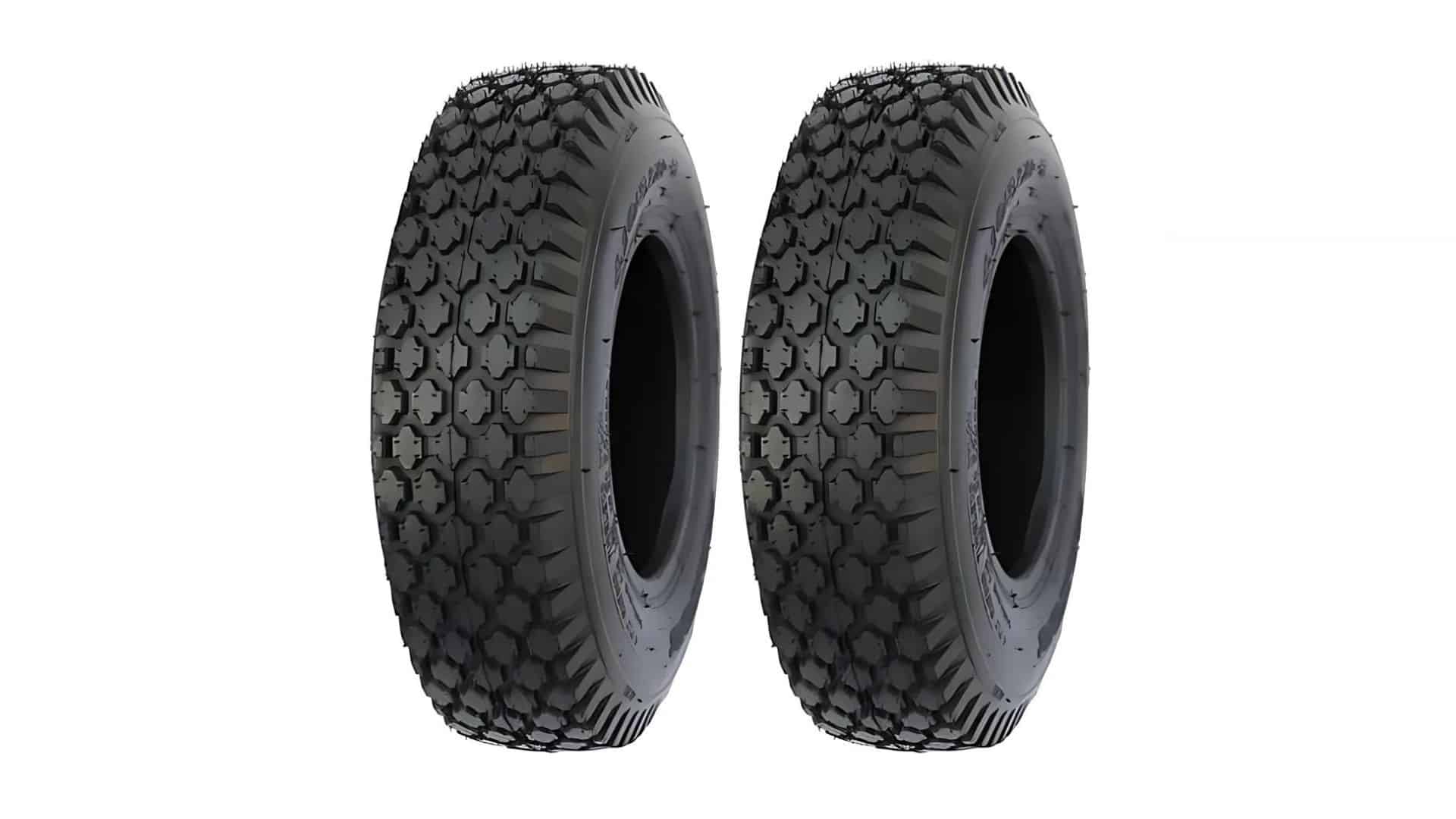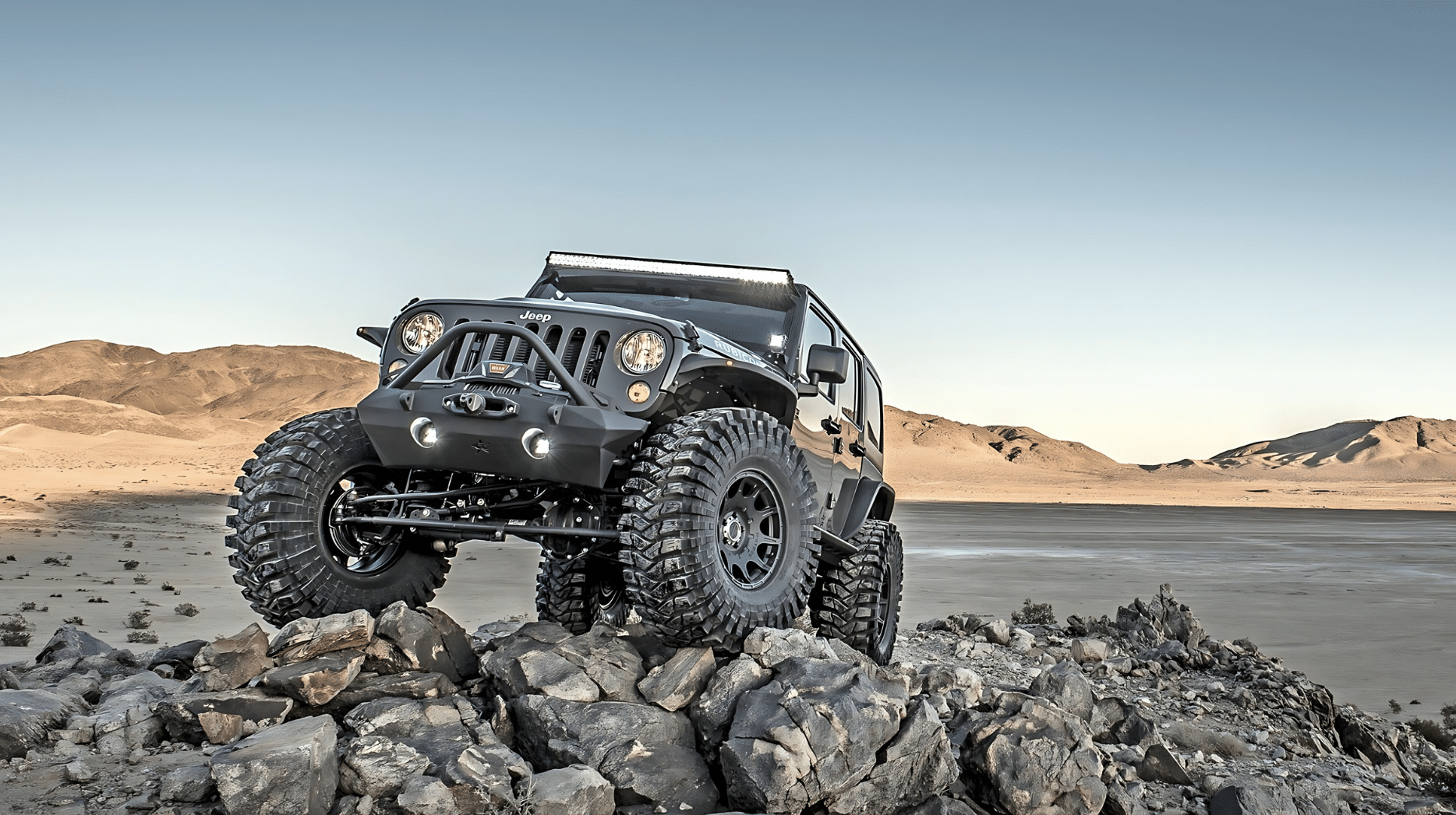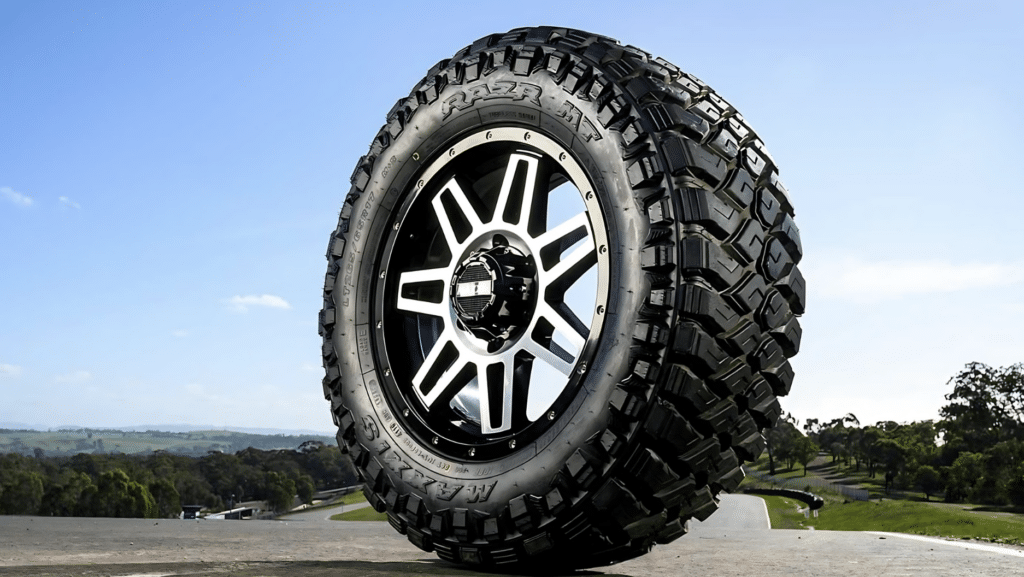Off-roading requires the right gear, especially tires. Many adventure seekers wonder if their current set can handle rough trails and bumpy paths.
4-ply tires offer a good mix of toughness and comfort for light off-road use, making them a popular choice for beginners and casual off-roaders.
This guide will help you understand how 4-ply tires work for off-roading and when they might be the best choice for your vehicle.
You’ll learn about the pros and cons of 4-ply tires, how they compare to other options, and useful tips for using them on different terrains.
By the end, you’ll see whether 4-ply tires fit your off-road plans.
Understanding 4 Ply Tires

4-ply tires are a type of tire with four layers of material in their makeup. These layers, called plies, are usually made of rubber-coated fabric.
The fabric can be nylon, polyester, or other strong materials. This design gives the tire its shape and strength.
Many cars, light trucks, and SUVs use 4-ply tires. They’re common for everyday driving and light off-road use.
The four layers offer a good balance between toughness and comfort on the road.
Key Characteristics
4 ply tires have some special traits that make them good for off-road use:
- Durability: The four layers help the tire resist cuts and punctures from rocks and sticks on rough trails.
- Flexibility: These tires can bend and flex over bumps and dips, helping your vehicle grip uneven ground.
- Comfort: 4-ply tires are softer than tires with more layers, giving a smoother ride on both roads and trails.
- Performance: 4-ply tires handle rugged terrain well and provide good dirt, gravel, and light mud traction.
- Weight: These tires are lighter than tires with more plies, which can help fuel use and speed.
Can 4-Ply Tires Handle Off-Roading?
Many folks wonder if 4-ply tires can handle off-road challenges. The short answer is yes, but with some limitations.
These tires can handle light to medium off-road use quite well. They work great on gravel roads, offering good grip and resisting punctures from small stones.
They provide decent traction on packed dirt tracks like forest roads or desert paths. Four-ply tires can also manage small rocks, shallow ruts, and low tree roots without much trouble.
Even light mud after a brief rain isn’t a big issue. However, they’re not meant for deep mud or very tough terrain.
4-ply tires are best for casual off-roading or beginner trails, making them a good pick if you mostly drive on regular roads with occasional off-road trips.
Why Choose 4 Ply Tires for Off-Roading?

If you’re new to off-roading or just like to hit the trails occasionally, 4-ply tires might be what you need. Consider these tires, they could be a good fit for your off-road plans.
1. Balanced Performance
Four-ply tires offer a nice mix of toughness and flex. They’re strong enough to handle bumps and rocks but still soft enough to mold to the ground. This balance helps you grip the trail better.
For most casual off-roaders, they do the job just fine. Their flexibility means a smoother ride when you’re back on regular roads.
2. Handling and Stability
You want tires that help keep your vehicle steady when you’re off-road. 4-ply tires do a good job at this.
They give you better control on uneven ground, which can help you feel more confident on the trail. The way 4-ply tires are made helps them grip the ground well.
This means your tires are working to keep you on track when you’re going around a bend on a dirt road or climbing a small hill.
3. Fuel Efficiency
One nice thing about 4-ply tires is that they’re lighter than tires with more layers.
This can help you save on gas. When your tires are lighter, your engine doesn’t have to work as hard to move your vehicle.
This means you might use less fuel, even driving on tough terrain.
4. Cost-Effectiveness
4-ply tires are often cheaper than tires with more plies. This is good news if you’re getting into off-roading and don’t want to spend a ton of money right away.
You can get a set of tires that will handle light off-road use without breaking the bank.
Performance Analysis: 4-Ply Tires in Different Conditions

Here’s a bar chart illustrating the performance of 4-ply tires in different off-road conditions. Each condition is rated on a scale from 1 to 10, highlighting how well these tires handle various terrains and situations.
Limitations of 4-Ply Tires in Off-Roading
While 4-ply tires have their strengths, it’s important to know where they might fall short. Let’s look honestly at some of their limits regarding off-road use.
1. Less Puncture Resistance
Four ply tires aren’t as tough as tires with more layers for sharp objects. You might have trouble driving on trails with many pointy rocks or thorny plants.
These tires can handle small, blunt objects well but are more likely to get punctured by sharp things than tires with more plies.
2. Limited Durability on Extreme Terrains
4-ply tires work great for light off-roading but struggle in tough conditions. If you’re considering tackling very rocky paths or deep, sticky mud, these tires might not be up to the task.
On rocky roads, the constant battering can wear down 4 ply tires faster than you’d like. They might chip or tear more easily than tires made for hardcore off-roading.
In deep mud, 4-ply tires can quickly become bogged down. They lack the aggressive tread or stiffness needed to bite through thick mud and keep you moving.
3. Heat Buildup
4-ply tires can heat up faster than tires with more layers when used in tough off-road conditions.
This extra heat can lead to faster wear and tear. On long, challenging trails, the tires might not hold up as well as thicker options.
In extreme cases, this heat buildup could lead to tire failure, potentially leaving you stranded on the trail.
4. Less Load Capacity
These tires have a lower load capacity compared to tires with more plies. If you’re carrying heavy gear or towing something, 4-ply tires might not be the best choice.
They could wear out faster or even fail under too much weight.
This limitation might restrict the amount of camping gear or recovery equipment you can safely bring on your off-road adventures.
Best Practices for Off-Roading with 4-Ply Tires

To get the most out of your 4-ply tires when off-roading, you must know how to pick the right ones and take care of them. Let’s go over some tips to help you out.
1. Choosing the Right 4-Ply Tires
Picking the right tires can make a big difference in your off-road adventures. Here’s what to keep in mind:
- Terrain Type: Think about where you’ll be driving most. For rocky trails, look for tires with tough sidewalls. If you are in the mud, you’ll want tires with wide, deep grooves to help clear the muck.
- Vehicle Load: Consider how much weight your vehicle usually carries. If you often haul heavy gear, you might need tires with a higher load rating.
- Tread Patterns: How the grooves are laid out on your tire matters. For general off-road use, an all-terrain tread pattern is a good choice. It gives you grip off-road without being too noisy on regular roads.
- Tire Size: Bigger isn’t always better. Ensure the tire size fits your vehicle and won’t rub against your wheel wells. A good rule of thumb is to stay within 3% of your stock tire size.
2. Maintenance Tips for Optimal Performance
Taking care of your tires can help them last longer and perform better. Here are some key things to do:
- Regular Inspection: Before and after each off-road trip, check your tires for cuts, bulges, or stuck objects. Catching problems early can prevent bigger issues down the road.
- Proper Inflation: Keep your tires at the right pressure. Under-inflated tires can overheat and wear out faster, and rocks and bumps can more easily damage over-inflated tires.
- Alignment: Make sure your wheels are properly aligned. This helps your tires wear evenly and improves handling both on and off-road.
3. When to Replace Your 4-Ply Tires
Knowing when to get new tires is important for safety and performance. Here’s what to look out for:
- Tread Depth: If your tread is less than 4/32 of an inch deep, it’s time for new tires. You can check this with a tread depth gauge or the old penny test.
- Cracks and Sidewall Damage: Look for cracks in the rubber or bulges in the sidewall. These can be signs of internal damage and mean it’s time for new tires.
- Age: Even if the tread looks good, tires over six years old should be checked by a pro. The rubber can break down over time even if you don’t use the tires much.
- Rotation and Alignment: Rotate your tires every 5,000 to 8,000 miles. This helps them wear evenly. Get your alignment checked at least once a year or if you notice your vehicle pulling to one side.
Following these tips lets you get the most out of your 4-ply tires and enjoy safer, more fun off-road trips. Remember, good tire care is key to performance and safety on the trails.
Comparison with Other Tire Types
| Feature | 4 Ply Tires | 6 Ply Tires | 2 Ply Tires |
|---|---|---|---|
| Strength & Durability | Moderate durability, suitable for light to moderate off-roading. | High durability, ideal for rocky or tough terrains. | It has low durability and is prone to punctures, so it is best for smooth roads. |
| Handling | Better handling on regular roads and light trails due to more flexibility. | Superior handling in extreme off-road conditions, less flexible on regular roads. | Adequate handling on smooth roads and poor off-road performance. |
| Puncture Resistance | Good puncture resistance for general off-roading. | Better resistance to punctures, suitable for rough terrains. | Low puncture resistance, not suitable for off-roading. |
| Load Capacity | Moderate load capacity, suitable for lighter vehicles. | Higher load capacity, suitable for heavier vehicles. | Low load capacity, not ideal for carrying heavy loads. |
| Comfort | It is more comfortable on regular roads and absorbs shocks well. | It is less comfortable, more rigid, and better suited for tough terrains. | Most comfortable on smooth roads, but poor off-road comfort. |
| Fuel Efficiency | Better fuel efficiency due to lighter weight. | Slightly less fuel-efficient but still reasonable. | Best fuel efficiency, very light and flexible. |
| Cost | Generally, it is more affordable and good for budget-conscious users. | It is more expensive due to additional durability and performance. | Least expensive but limited in capability. |
| Best Use Case | Mixed-use (road and light off-roading), weekend trail rides, lighter vehicles. | Frequent off-roading on rocky or rough terrain, heavier vehicles. | Smooth road driving, light vehicles, minimal off-roading. |
Conclusion
4-ply tires offer a good mix of toughness and comfort for light off-roading. They’re a solid choice if you’re starting out or if you split your time between roads and trails.
These tires can handle gravel, dirt, and mud without breaking the bank.
But remember, they have limits. For hardcore off-roading or heavy loads, you might need something tougher.
Always match your tires to your driving needs and take good care of them.
Whether 4-ply tires are right for you depends on your adventures. If weekend trail rides and the occasional camping trip are your speed, they could be perfect.
Keep an eye on wear and tear; you’ll be set for many exciting off-road journeys.
Frequently Asked Questions
Are 4-Ply Tires Good for Daily Driving?
Yes, 4-ply tires work well for daily driving. They offer a good balance of comfort and durability for city streets and light off-road use.
How Long do 4-Ply Tires Typically Last?
With proper care, 4-ply tires can last about 50,000 to 60,000 miles. However, this can vary based on driving conditions and maintenance.
Do 4-Ply Tires Perform Well in Snow?
4-ply all-terrain tires can handle light snow, but for deep snow or ice, you’ll want dedicated winter tires for better safety.


